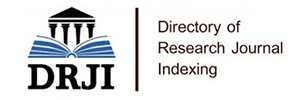
Journal Basic Info
**Impact Factor calculated based on Google Scholar Citations. Please contact us for any more details.Major Scope
- Prostate Cancer
- Colorectal Cancer
- Lymphoma
- Chemotherapy and Radiotherapy
- Stomach Cancer
- Sarcomas
- Carcinomas
- Radiological Techniques and Scans
Abstract
Citation: Clin Oncol. 2017;2(1):1230.DOI: 10.25107/2474-1663.1230
Postoperative Radioactive Iodine for Differentiated Thyroid Cancer: A Historical Perspective
TW Chan, JR Hurley and TJ Fahey
Department of Surgery, Section of Endocrine Surgery, Weill Cornell Medical College, USA
Department of Medicine, Division of Endocrinology, Diabetes and Metabolism, Weill Cornell Medical College, USA
PDF Full Text Review Article | Open Access
Abstract:
Radioactive iodine has been used in differentiated thyroid cancer for postoperative thyroid remnant ablation for several decades, yet its indications remain controversial. Because the potential administration of postoperative RAI plays an important role in surgical decision-making, understanding the current indications for postoperative RAI is critical in the global management of differentiated thyroid cancer. This review examines the changing indications for postoperative radioiodine from its introduction to the current guidelines.
Keywords:
Cite the Article:
Chan TW, Hurley JR, Fahey TJ. Postoperative Radioactive Iodine for Differentiated Thyroid Cancer: A Historical Perspective. Clin Oncol. 2017; 2: 1230.













